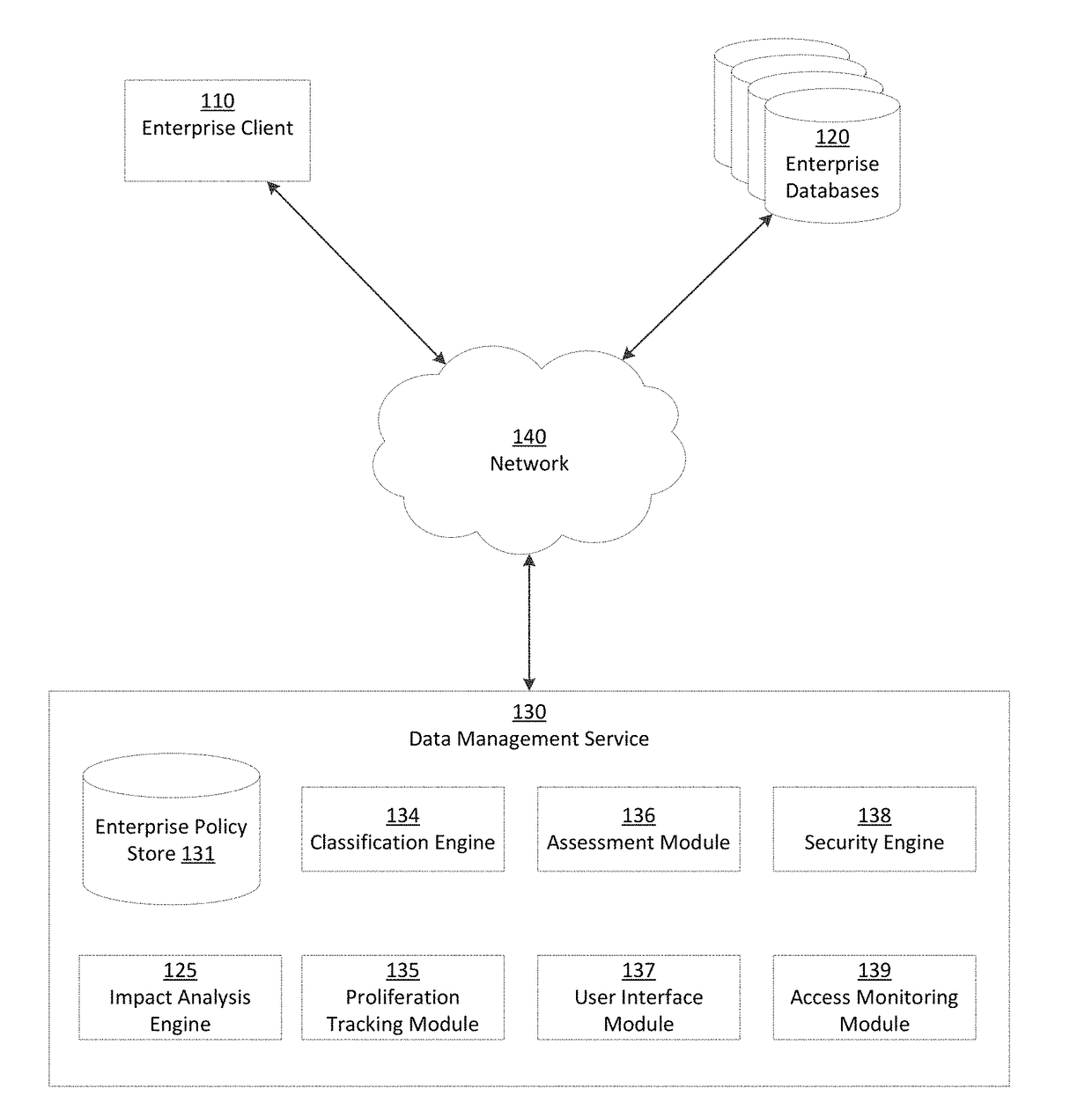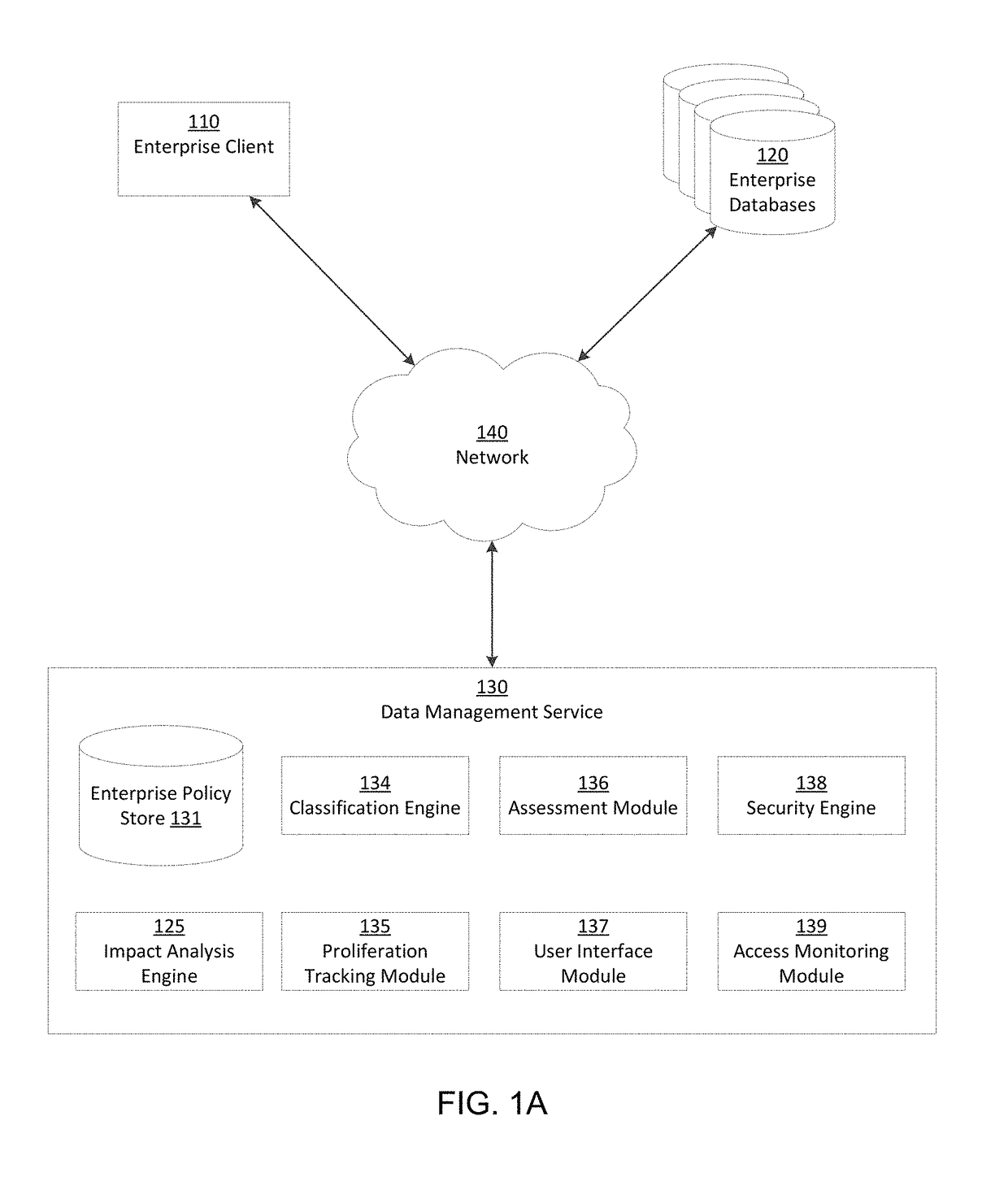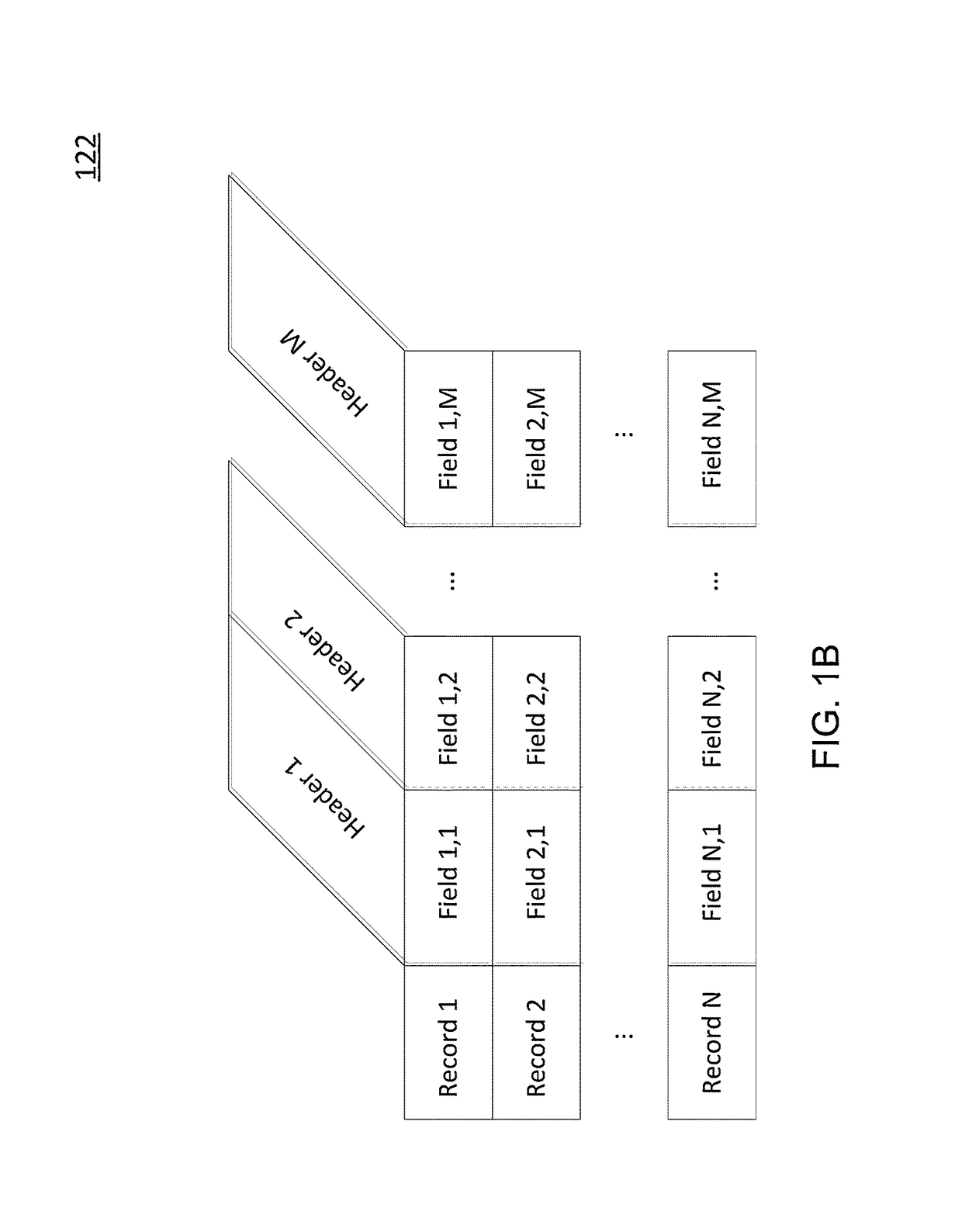Assessment type-variable enterprise security impact analysis
a type-variable, enterprise security technology, applied in the field of visualizing data, can solve the problems of inability to perform frequent scans, inability to identify sensitive data, and inability to accurately assess the accuracy of network administrator's sensitive data knowledge,
- Summary
- Abstract
- Description
- Claims
- Application Information
AI Technical Summary
Benefits of technology
Problems solved by technology
Method used
Image
Examples
example
[0192]The following section presents the implementation of that model using a relational database.
Sats Risk Score Factor
[0193]
Column Data Type Ordinal NameTypeModPositionLengthPrecisionScaleNot Null FACTOR_IDNUMBER1 22100 FACTOR_NAMEVARCHARZ21,000 00 FACTOR_WEIGHTAGENUMBER3 22102 FACTOR_TYPEVARCHARZ41,000 00
Sats Risk Score Factor Value
[0194]
Type Ordinal Not Column NameData TypeModPositionLengthPrecisionScaleNull FACTOR-IDNUMBER122100 FACTOR_VALUEVARCHAR221,00000 FACTOR_VALUE_SEQUENCENUMBER322100 FACTOR_VALUE_DESCRIPTIONVARCHAR244,00000 HIDDENCHAR5100
Sats Repo Risk Factor
[0195]
Column Data Type Ordinal NameTypeModPositionLengthPrecisionScaleNot NullDefault REPO_IDNUMBER1 22100 POLICY_IDNUMBER2 22100 FACTOR_IDNUMBER3 22100 FACTOR_RISK_SCORENUMBER4 22102 FACTOR_WEIGHTAGENUMBER5 22102 FACTOR_VALUEVARCHARZ6500 00
Data Quality Process Flow
[0196]Multi-assessment type impact analysis could be applied to others concepts, as by example the data quality. The same ...
example interface
[0230]FIG. 8A is an example interface illustrating database attributes of an enterprise database 120, in accordance with an embodiment. The properties include a name and description of the database (as used within the data management service 130) as well as database configuration properties such as database type, connectivity (e.g., IP (internet protocol) address, port number, service name, domain name), and access credentials (e.g., connection string, username, password). The database attributes include an associated location and enterprise groupings (e.g., application group, security group, department).
[0231]FIGS. 8B and 8C are example interfaces for obtaining attributes of an enterprise database 120, in accordance with an embodiment. Some or all of the properties listed in FIG. 8C may be relevant to specific repository and / or data store types selected in FIG. 8B. Accordingly, the selection of a repository and / or data store type in FIG. 8B prompts the UI generator 137 to display a...
PUM
 Login to View More
Login to View More Abstract
Description
Claims
Application Information
 Login to View More
Login to View More - R&D
- Intellectual Property
- Life Sciences
- Materials
- Tech Scout
- Unparalleled Data Quality
- Higher Quality Content
- 60% Fewer Hallucinations
Browse by: Latest US Patents, China's latest patents, Technical Efficacy Thesaurus, Application Domain, Technology Topic, Popular Technical Reports.
© 2025 PatSnap. All rights reserved.Legal|Privacy policy|Modern Slavery Act Transparency Statement|Sitemap|About US| Contact US: help@patsnap.com



